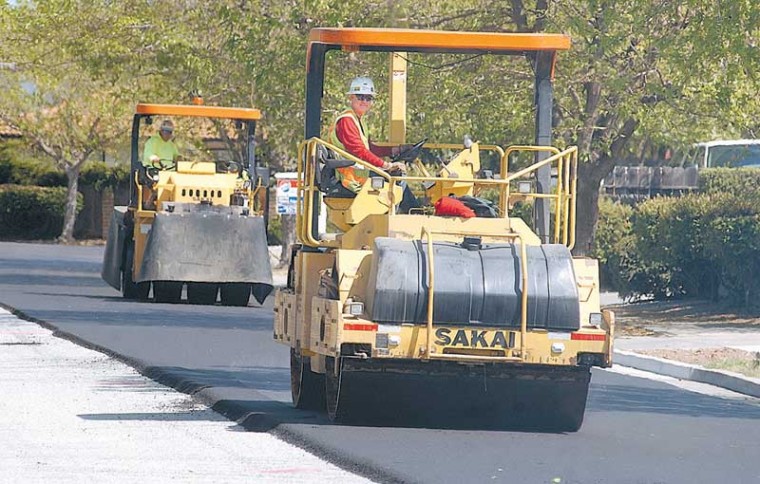Hollister
– Sometimes, potholes just won’t go away.
Hollister – Sometimes, potholes just won’t go away.
Gael McAbee, safety manager at Brent Redmond Transportation Inc., said she regularly asks the City of Hollister to repair Lana Way, the road that more than 30 of the company’s trucks drive over every day. The city fills the holes, she said, but it’s only a matter of time before they reappear.
“It’s like clockwork,” McAbee said.
The last round of repairs took place little more than a week ago, and McAbee said, “They’re already starting to pothole again.”
Things would be a lot easier if the city came up with a long-term solution, McAbee said. And according to David Rubcic, an associate civil engineer with the City of Hollister, that’s exactly what’s happening.
Rubcic said re-paving Lana Way is part of the first phase of the city’s plan to re-surface nearly 100 street segments by the end of the year.
The results of some of that work can already be seen on Sunset Drive in front of Hazel Hawkins Memorial Hospital, on Severinson Street south of Nash Road, and elsewhere, Rubcic said. Other roads, including segments of Sunnyslope Road and Central Avenue, will also be re-paved in the coming months, he said.
And city workers aren’t just fixing the holes. As they proceed with their work, they’re also replacing and repairing many curbs, Rubcic said. In fact, the recent repairs mean that the stretch of Nash Road from San Benito High School to Cushman Street is now completely wheelchair accessible.
All of this work may seem incongruous at a time when the city is struggling with service cuts. In January, the City Council approved a deficit reduction plan that limited pothole repair to holes that have reached a depth of three inches.
The money for the first phase of these projects – which includes around 50 streets – comes from State Transportation Improvement Program. Rubcic said the $4.5 million in STIP funds that Hollister received last year is highly unusual. The city normally gets less than $1 million, he said.
“But our roads really need it,” Rubcic said.
Repair work later this year will be funded by Regional Transportation Improvement Program money and around $3 million from the city’s redevelopment agency, he said. And it isn’t always the most run-down roads that get fixed first, Rubcic said. Even with the windfall of state dollars, roads must still be prioritized for repair based on an analysis of the road’s condition, its usage and how the repairs fit into the overall re-paving program, Rubcic said.
“Some roads are in much worse conditions than the ones we chose, but the roads we’re doing give us the biggest bang for our buck,” he said.
McAbee said she hasn’t heard anything about re-paving, but she’s glad the city may make her regular pothole complaints unnecessary. She said she is hoping the road work results in long-term solutions to local street problems.
Just putting down new pavement won’t do the job, she said.
“It needs to be stripped all the way down and the soil stabilized,” McAbee said. “That would just be a one-time fix.”
Rubcic said Pavex Construction – the company hired by the city to perform the road repairs – won’t be rebuilding any foundations, but the company’s crews will reshape the roads to improve drainage and reduce pools of standing water.
“One of the worse things for asphalt is standing water,” Rubcic said. He later added, “By going out and re-paving the road, we can bring it back to a brand new state of repair.”
Anthony Ha covers local government for the Free Lance. Reach him at 831-637-5566 ext. 330 or ah*@***********ws.com.










